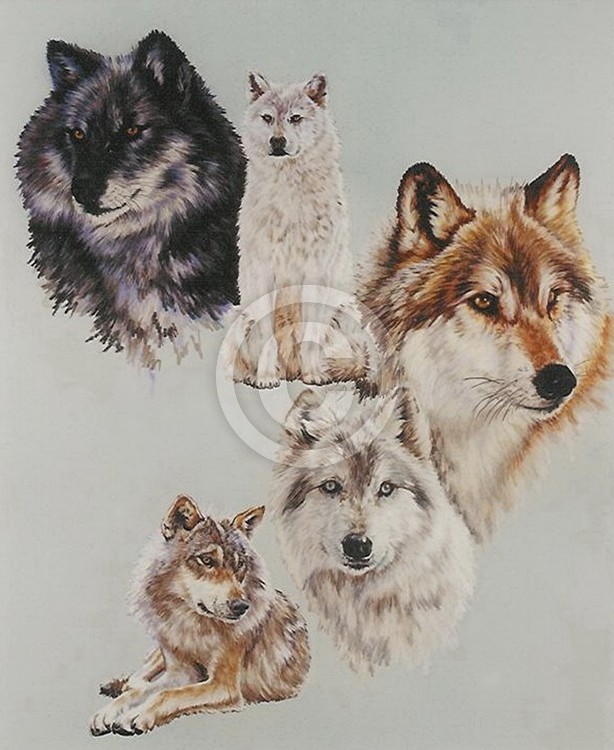- Barbara Keith
- View Portfolio
- Image 523 of 808
- Added 18 Jun 2018
- 282 Views
- 1 Comment
- Share This Image On...

The gray wolf has very dense and fluffy winter fur, with short underfur and long, coarse guard hairs. Most of the underfur and some of the guard hairs are shed in the spring and grow back in the autumn period. The longest hairs occur on the back, particularly on the front quarters and neck. Especially long hairs are on the shoulders, and almost form a crest on the upper part of the neck. The hairs on the cheeks are elongated and form tufts. The ears are covered in short hairs, which strongly project from the fur. Short, elastic and closely adjacent hairs are present on the limbs from the elbows down to the calcaneal tendons. The winter fur is highly resistant to cold; wolves in northern climates can rest comfortably in open areas at -40° by placing their muzzles between the rear legs and covering their faces with their tail. Wolf fur provides better insulation than dog fur, and does not collect ice when warm breath is condensed against it. In warm climates, the fur is coarser and scarcer than in northern wolves. Female wolves tend to have smoother furred limbs than males, and generally develop the smoothest overall coats as they age. Older wolves generally have more white hairs in the tip of the tail, along the nose and on the forehead. The winter fur is retained longest in lactating females, though with some hair loss around their nipples. Hair length on the middle of the back is 60–70 mm (2.4–2.8 in). Hair length of the guard hairs on the shoulders generally does not exceed 90 mm (3.5 in), but can reach 110–130 mm (4.3–5.1 in). Coat color ranges from almost pure white through various shades of blond, cream, and ochre to grays, browns, and blacks, with variation in fur color tending to increase in higher latitudes. Differences in coat color between sexes are largely absent, though females may have redder tones. Black-colored wolves in North America inherited the Kb allele responsible for melanism from past interbreeding with dogs, while the mutation was found to be naturally occurring in wolves from Iran. Black specimens are more common in North America than in Eurasia, with about half the wolves in Yellowstone National Park being black (Wikipedia).
1 Comment
Joanie Holliday 18 Jun 2018
MIGHTY GORGEOUS. WONDERFUL WORK.